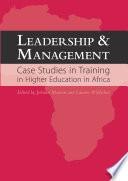
Pengembangan Interaksi Edukasi Pembelajaran Pendidikan Agama Islam : Teori & Praktik
Penulisan buku ini sebagai bentuk partisipasi penulis dalam pengembangan pendidikan di Indonesia, khususnya Pendidikan Agama Islam. Kehadiran buku ini semoga dapat membantu guru PAI dan mahasiswa calon guru PAI dalam memenuhi sumber referensi dalam rangka pengembangan keterampilan membangun ineraksi edukasi pembelajaran PAI dengan menggunakan pendeatan ilmiah (saintific) sesuai dengan kurikulum 2013. Penulisan buku ini disesuaikan dengan kebutuhan dan kurikulum yang berlaku berupa kurikulum 2013. Sumber penulisannya banyak menggunakan buku referensi dan jurnal-jurnal terbaru untuk mendukung konstruksi teori dan kerelevansian substansi dengan kebutuhan.
- ISBN 13 : 979371798X
- ISBN 10 : 9789793717982
- Judul : Pengembangan Interaksi Edukasi Pembelajaran Pendidikan Agama Islam : Teori & Praktik
- Pengarang : Prof. Dr. Syabuddin Gade, M. Ag., Dr. Sulaiman, MA, M. Ag., Dr. Sulaiman, MA, M. Ag., Dr. Sulaiman, MA, M. Ag., Dr. Sulaiman, MA, M. Ag., Dr. Sulaiman, MA, M. Ag., Dr. Sulaiman, MA, M. Ag., Dr. Sulaiman, MA, M. Ag., Dr. Sulaiman, MA, M. Ag., Dr. Sulaiman, MA, M. Ag., Dr. Sulaiman, MA, M. Ag., Dr. Sulaiman, MA, M. Ag., Dr. Sulaiman, MA, M. Ag., Dr. Sulaiman, MA, M. Ag., Dr. Sulaiman, MA, M. Ag., Dr. Sulaiman, MA,
- Kategori : Education
- Penerbit : Ar-Raniry Press
- Bahasa : id
- Tahun : 2019
- Halaman : 262
- Google Book : https://play.google.com/store/books/details?id=kE6HEAAAQBAJ&source=gbs_api
-
Ketersediaan :
... dasar yang berkaitan dengan aspek fisik, in- telektual, sosial-emo- sional, moral, spiritual, dan latar belakang so- sial-budaya. 1.2 Mengidentifikasi potensi peserta didik usia sekolah dasar dalam ... Agama Islam : Teori & Praktik.







